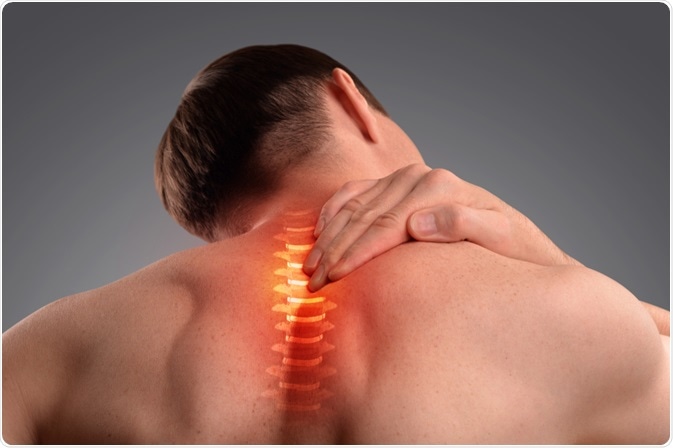Spasticity is a condition involving an involuntary increase in muscle tone that leads to resistance against normal movements of the body and may cause pain in some individuals.
This condition is strongly associated with certain medical conditions of the central nervous system (CNS), such as multiple sclerosis (MS) and cerebral palsy, in addition to injury or tumor growth in the area.

Image Credit: Kobzev Dmitry / Shutterstock.com
Causes
Spasticity is believed to be caused by damage to the nerve pathways that are responsible for muscular movement control, although the exact mechanism of this is not known. The damage may present as a result of a variety of circumstances, including:
- MS
- Cerebral palsy
- Spinal cord injury
- Stroke
- Trauma to the brain or head
All of these conditions have the potential to interfere with the nerve pathways involved in muscle movements and damage may and therefore result in muscle spasticity.
Spasticity: Loosen Up
Symptoms
The signs and symptoms of spasticity may include:
- Increased muscle tone (hypertonicity)
- Involuntary muscle spasms
- Involuntary muscle clonus
- Exaggerated tendon reflexes
- Pain or discomfort
- Muscle contracture
- Bone and joint deformities
As a result of these symptoms, many patients exhibit an altered posture or gait, known as scissoring, due to the crossing of their legs as they walk. It is also common for individuals to partake in daily activities as usual. However, they may have a reduced ability to function and encounter difficulties with maintaining their personal care and hygiene. For these reasons, the quality of life in those affected by muscle spasticity can be significantly lower than the general population.
Diagnosis
The diagnosis of spasticity should involve a thorough medical history and physical examination, with a particular focus on potential causes for the symptoms, in order to make the right diagnosis and management recommendations. Important factors to be considered include any traumatic events that may have affected the CNS, changes in medications, noxious stimuli, and intracranial pressure changes.
Additionally, electromyography (EMG) can provide valuable information about the velocity of nerve conduction. Magnetic resonance imaging (MRI) scans can also help to visualize causative damage in the CNS.
The severity of the condition can be classified according to a clinical scale, such as the Ashworth Scale, Physician’s Rating Scale, or the Spasm Scale.
Management
The management of muscle spasticity typically involves a team of specialized health professionals who work together to provide optimal care. This may include a neurologist, physician, physical therapist, occupational therapist, neurosurgeon, and orthopedic surgeon.
Initial treatment usually consists of physical therapy with certain exercises to stretch the affected muscles. This can help to lengthen the muscle, decrease spasticity, and prevent contracture. Other methods such as splinting, casting, and bracing may also be used to maintain flexibility and range of motion.
Pharmacological treatment may be needed to manage symptoms of spasticity in some cases. This may include oral treatment with baclofen, clonazepam, dantrolene, diazepam, gabapentin or tizanidine. Additionally, injections of botulinum toxin or phenol can be beneficial for some patients.
Surgical procedures are also indicated in some circumstances to correct the positioning of tendons or nerve pathways. Intrathecal baclofen therapy (ITB) may be used in severe cases, which involves the direct administration of baclofen to the spinal cord, thus reducing the risk of systemic side effects. Orthopedic surgery or neurosurgery can also help to remedy changes to the muscles, bones, connective tissue, or nervous system.
References
Further Reading